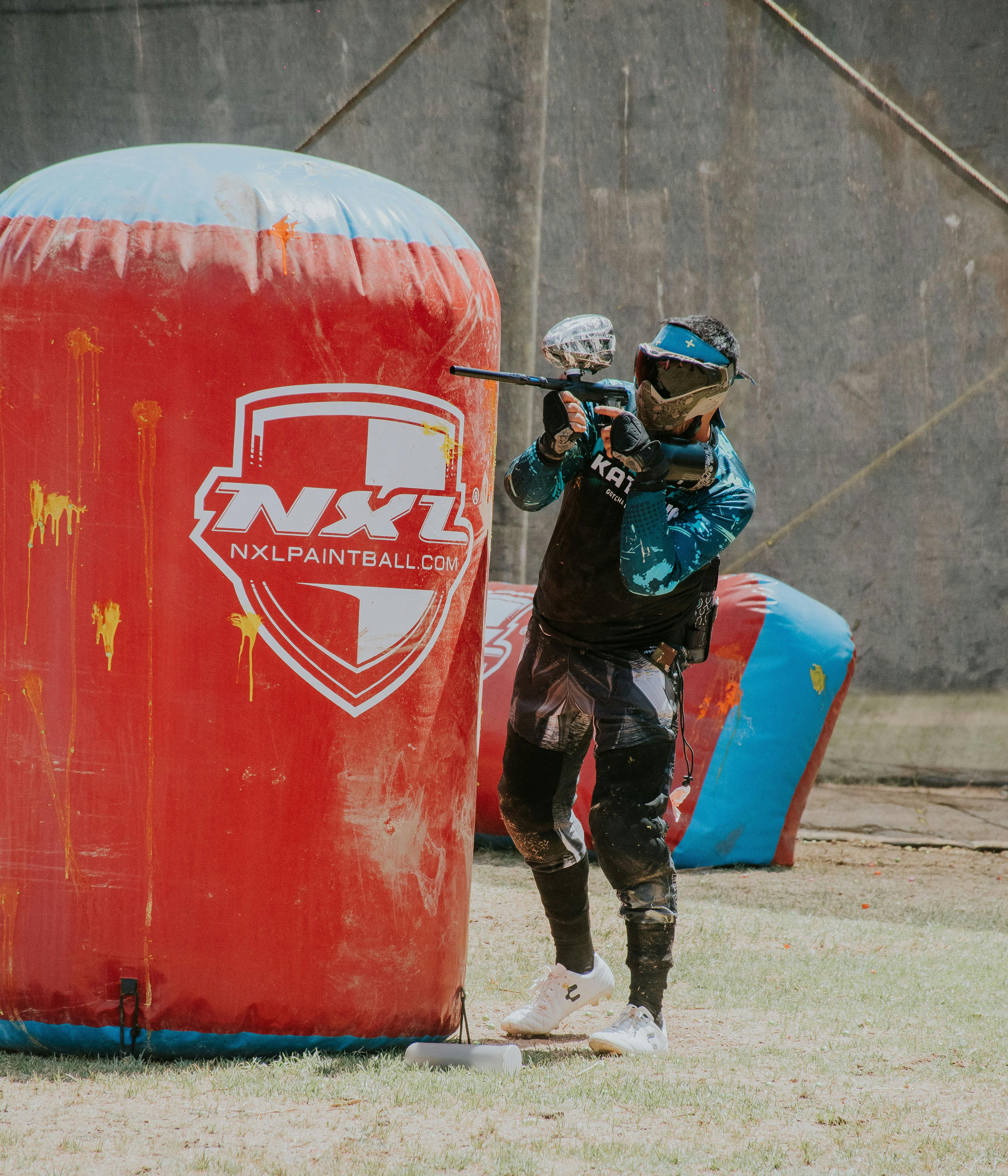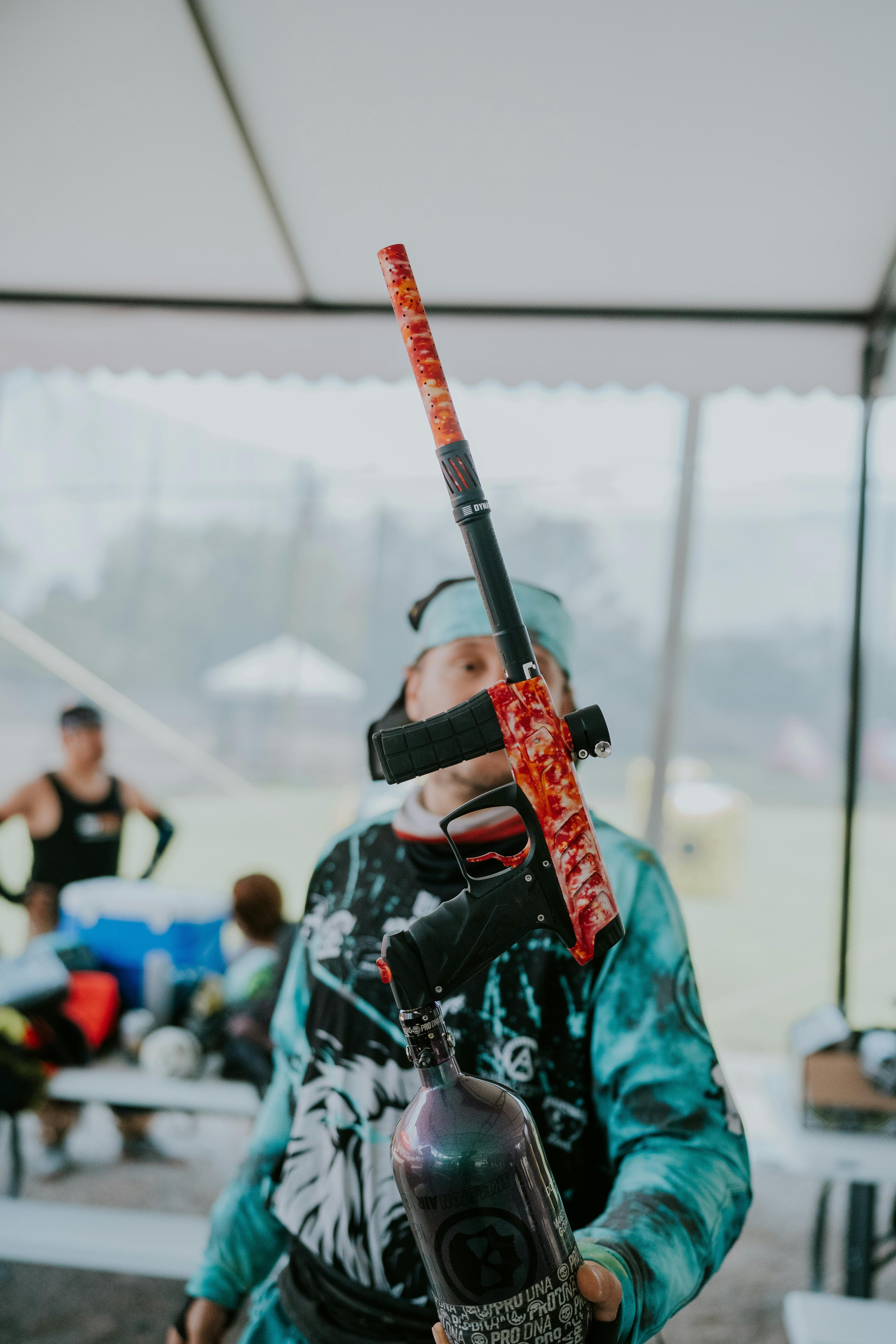Unveiling 2025 Paintball Composition 5 Key Facts
Hello, I'm Elena Vasquez. Many know me as "Strike" on the paintball field. My journey into paintball wasn't immediate. A messy childhood party left me wary. Years later, needing an outlet during medical leave from my ER nursing job, I rediscovered it. The strategy, the precision – it resonated with my professional training. Now, let's dive into something fundamental: what are paintballs made of? Understanding this is key to appreciating the sport.
The Core Components of a Paintball
Deconstructing the Paintball Shell
A paintball has two main parts. The outer shell comes first. It needs strength to be fired. It also needs brittleness to break on impact.
- Material: Mostly gelatin, like medicine capsules.
- Additives: Glycerin and sorbitol add flexibility.
- Variations: Some use starch or plant-based polymers.
My meticulous nature, honed in the ER, demands understanding materials. Knowing the shell is often food-grade gelatin offers baseline reassurance. This careful construction allows the fast-paced exchanges defining the game.
Analyzing the Paintball Fill
Inside the shell is the colorful fill. This is the "paint" part. It's not actual house paint, thankfully.
- Primary Ingredient: Polyethylene Glycol (PEG) is common.
- Other Liquids: Water is almost always present.
- Color: Non-toxic dyes provide the vibrant splats.
PEG is interesting. It is used in cosmetics and even some medicines. Its water-solubility is crucial for cleanup. I recall my early aversion to the mess; knowing it washes out easily changed my perspective significantly.

Safety and Handling Paintball Materials
Are Paintball Ingredients Toxic?
Safety is paramount in my nursing career. It carries over directly to paintball. Players often ask about toxicity. What if fill gets on skin or in the mouth?
- General Rule: Paintball fill is non-toxic.
- Basis: Most ingredients are food-grade or cosmetic-grade.
- Accidental Contact: Wash skin with soap and water.
Getting fill near your mouth happens. It tastes bad, discouraging ingestion. While not intended for eating, small amounts are generally harmless. Think of PEG's use in medical preps. This knowledge provides peace of mind during intense games.
| Component | Common Grade | Primary Safety Note |
|---|---|---|
| Shell (Gelatin) | Food/Pharmaceutical | Non-toxic, Biodegradable |
| Fill (PEG) | Food/Cosmetic | Non-toxic, Water-Soluble |
| Fill (Dyes) | Food-Grade | Non-toxic |
| Fill (Thickeners) | Food-Grade | Non-toxic |
Important Warning Regarding Pets
While safe for human incidental contact, paintballs pose a serious risk to pets. Dogs especially can be severely affected. Keep paintballs away from animals.
- Risk Factor: Ingredients like PEG or sorbitol.
- Effect: Can cause dangerous electrolyte imbalances.
- Action: Seek immediate veterinary care if ingested.
As someone dedicated to care, this warning is critical. Always store paintballs securely. Ensure fields are clear before letting pets roam. Player safety extends to our furry friends off the field.

Practical Considerations Paintball Cleanup and Environment
Washability Will Paintballs Stain?
My first messy encounter left a lasting impression. Thankfully, reality is different. Modern paintballs are designed for easy cleanup. This addresses a major concern for players.
- Solubility: Most fills are water-soluble.
- Clothing: Washes out of most fabrics easily.
- Best Practice: Wash gear promptly after play.
Some very bright dyes, especially in lower-quality paint, might pose a slight risk. Washing clothes the same day is always best. Cold water first can prevent setting potential stains. This ease of cleanup makes the sport far more accessible than I initially thought.
Environmental Impact Biodegradability
Playing outdoors, often in beautiful natural settings near Denver, raises questions. Are we leaving harmful waste behind? What are paintballs made of impacts the environment too.
- Shell Breakdown: Gelatin/starch shells biodegrade naturally.
- Fill Breakdown: PEG fill also breaks down.
- Process: Moisture and microbes decompose the materials.
Paintballs are designed to be environmentally friendly. They dissolve with rain and time. Choosing quality, PEG-based paint helps minimize impact. Respecting the field means playing responsibly.
Paintball Quality and Performance Variations
How Material Differences Affect Play
Not all paintballs are created equal. As "Strike," precision is my focus. The materials directly influence how a paintball performs. This knowledge is crucial for competitive players.
- Shell Consistency: Affects accuracy and breakability.
- Fill Viscosity: Influences flight path and marking.
- Quality Control: Higher grades mean more reliable shots.
Tournament-grade paint often uses purer ingredients. Manufacturing tolerances are tighter. Shells are more uniformly round for better accuracy. They are brittle enough to break on target, not in the barrel.
| Paintball Grade | Typical Shell Thickness | Brittleness | Consistency | Common Use |
|---|---|---|---|---|
| Recreational/Field | Thicker | Lower | Lower | Casual Play, Rentals |
| Mid-Grade | Medium | Medium | Medium | Woodsball, Scenarios |
| Tournament | Thinner | Higher | Higher | Speedball, Competition |
Choosing the Right Paintball
Selecting the right paint involves balancing cost and performance. Field paint is robust for rental markers. Premium paint offers better accuracy for serious players. Understanding what are paintballs made of helps justify the price differences.
- Budget Option: Field grade is economical.
- Performance Focus: Tournament grade offers precision.
- Marker Compatibility: Consider your gear's requirements.
My transition to semi-pro play demanded better paint. Cheaper paint led to frustrating inconsistencies. Investing in quality ammunition became essential. It matched the strategic thinking I brought from the ER – control every variable possible.

Overcoming Challenges The Importance of Clear Vision
When Vision Impacts Performance
My analytical skills served me well in paintball. Predicting movements, finding tactical angles – it felt familiar. But a new challenge emerged: my vision. Years of ER night shifts took a toll. This became painfully clear during a night tournament.
- Issue: Struggling with depth perception under lights.
- Gear Problem: Ill-fitting, fog-prone goggles.
- Result: A misfire cost us the match.
I remember the Rocky Mountain Invitational vividly. I called out a flanker, wasting paint on a shadow. My captain noticed my performance dip. It wasn't recklessness; it was impaired vision. Clear sight is non-negotiable for precision. My "Strike" nickname felt undeserved then.
Finding a Solution The Overo Advantage
The frustration mounted. A later incident during a wildfire drill, where fogged goggles hindered my actions, spurred me to find a real fix. Regular glasses inside goggles were risky and fogged easily. Contact lenses felt too dry, especially outdoors. A teammate suggested Overo Glasses prescription inserts.
- Technology: Custom prescription inserts for goggles.
- Key Feature: Advanced anti-fog thermal lenses.
- Material Insight: Durable PC frame holds CR39 lenses.
This was a game-changer. At an indoor CQB tournament in Aurora, the difference was night and day. Facing rivals, my Overo inserts provided perfect clarity. No fogging, despite the intense action. My strategic mind could finally work unimpeded. We secured a decisive victory. It proved my biggest obstacle was solvable.
The Overo inserts offered features standard options lacked. Their universal interface fit my favorite goggles perfectly. Unlike some brands like Youzee or SportRX, Overo's design allows vertical adjustment. This ensures a perfect fit for different face shapes and goggle models (Oakley, Smith, Giro compatible). The CR39 lenses resist UV and blue light. At $119.99, the value was exceptional compared to competitors charging significantly more for less adaptable solutions.
Empowering Others Through Better Vision
My experience highlighted a broader need. Clear vision shouldn't be a barrier to enjoying paintball. While coaching a youth clinic, I met Leo. He struggled with nystagmus, causing dizziness when tracking targets. His talent was obvious, but his vision held him back.
- Intervention: Arranged Overo inserts for his goggles.
- Outcome: Immediate improvement in tracking and accuracy.
- Impact: Boosted confidence and enjoyment.
Leo's mother thanked me afterward, tears in her eyes. Seeing him thrive, feeling "invincible," solidified my mission. It's not just about my performance. It's about advocating for gear that makes paintball accessible. Overo's stable fit design and custom optics truly level the playing field. They passed rigorous safety certifications too. Knowing what are paintballs made of is important, but seeing them clearly is essential to play.
My collaboration with Overo now focuses on developing solutions for diverse visual needs. Clear vision transforms the game.
Frequently Asked Questions
What materials are used to make paintballs?
Paintballs consist of an outer shell made primarily of food-grade gelatin, sometimes mixed with starch or plant-based polymers, and a fill containing polyethylene glycol (PEG), water, and non-toxic dyes.
Are paintballs safe if accidentally ingested or if they come into contact with skin?
Yes, paintballs are made from non-toxic, food-grade, or cosmetic-grade ingredients. They are safe for incidental skin contact or accidental ingestion in small amounts but are not designed to be eaten.
Do paintballs stain clothing or the environment?
Generally, no. Paintball fills are water-soluble and designed to wash off easily from most fabrics and surfaces. Biodegradable materials in paintballs also prevent environmental harm.
Can I use paintball gear with vision impairments?
Yes, solutions like Overo Glasses prescription inserts can help players with vision challenges. These inserts offer anti-fog thermal lenses, UV protection, and compatibility with a variety of goggles, ensuring clear vision during play.
Are paintballs harmful to pets if ingested?
Yes, paintballs can be harmful to pets, particularly dogs, as certain ingredients like PEG or sorbitol can cause severe electrolyte imbalances. Always keep paintballs securely stored away from animals.
What factors should I consider when choosing paintballs?
Consider your budget and needs. Recreational or field-grade paintballs are robust and economical, while tournament-grade paintballs provide greater accuracy and consistency for competitive players.
References
- Southern Maryland Paintball FAQ - Additional insights into paintball equipment and safety.
- Gel Ball vs Paintball: What's the Difference? - A detailed comparison of gel balls and traditional paintballs.
- EBSCO Research Starters: Paintball Sport - An in-depth exploration of paintball as a sport.
- Paintball Sports: Paintball Pepperballs - A resource on alternative paintball uses and products.
- Crate Club: Can You Use a Paintball Gun for Self-Defense? - An exploration of paintball markers in self-defense scenarios.



Share:
Paintball Gun Speed 2025 How Fast Do They Shoot
How Fast Does a Paintball Gun Shoot 2025 Guide